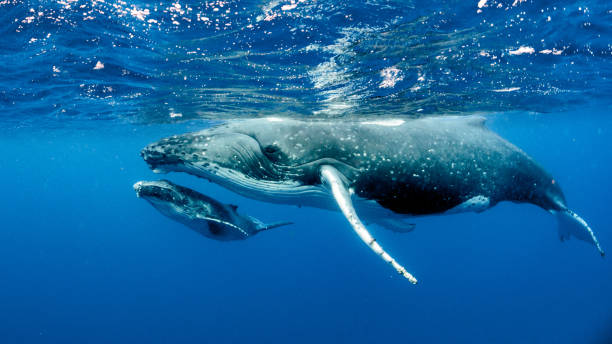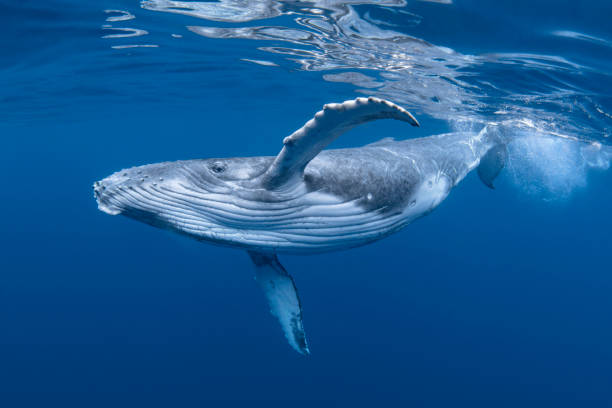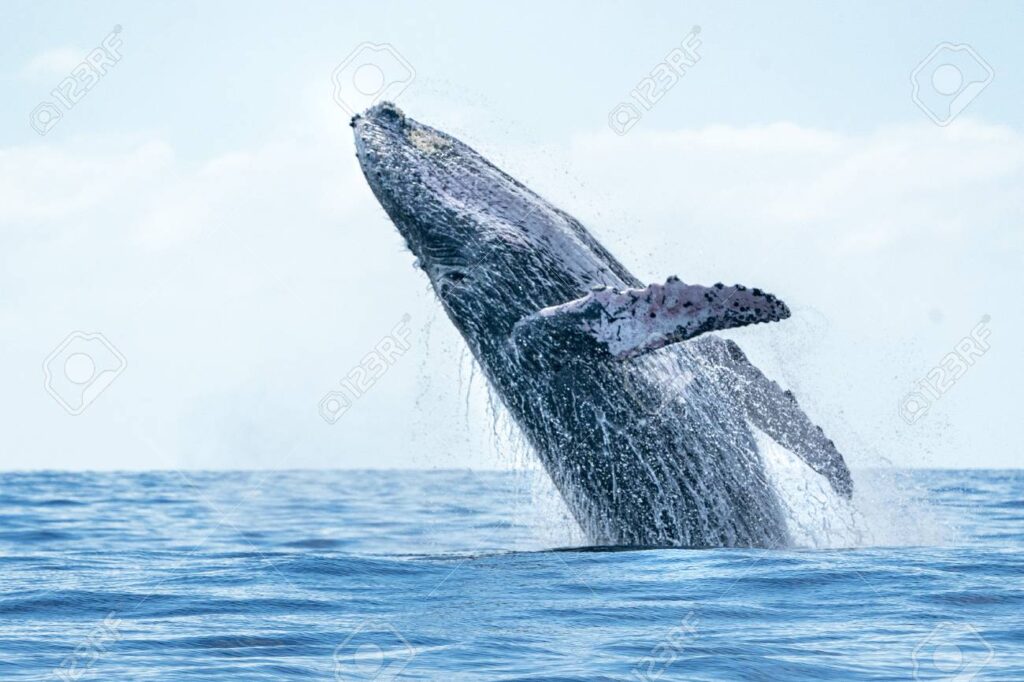
Humpback whales are common visitors to the Hawaiian Islands each year. The first whales are typically spotted in November with the last whales usually seen in late April into May (February being the “best” time to spot them).
Humpback Whales leave the icy waters of Alaska during the fall season for warmer waters to mate, give birth, and nurture their calves. Not only does Hawaii offer warmer waters, but a variety of ocean depths and a lack of natural predators as well.
Here at Home Watch Hawaii, we want to share some general knowledge about these special giants that we’ve learned while living in Hawaii.
About
The humpback whale has a distinctive body shape, with unusually long pectoral fins and a knobby head. The shape and color pattern on the humpback whale’s dorsal fin and tail are as individual in each animal as are fingerprints in humans. Fun fact…Male humpback whales are known to sing complex songs which can often be heard if swimming or snorkeling within a few hundred yards of them.
Female humpback whales are larger than their male counterparts, but adults typically measure between 40 and 50 feet and weigh in between 25 and 40 tons.
Humpback whales cannot breathe under water, but they can hold their breath for long durations of time. They resurface every 7 – 20 minutes to take a breath of air, and while they are at the surface they often perform some acrobatic stunts that are possibly used to communicate. In total, they spend about 10% of their time on the surface of the ocean.
Behavior and Diet
Humpback whales can be found relatively close to shore and often display activities near the surface, such as breaching (jumping out of the water) or slapping the surface with their pectoral fins and tails.
During the warmer months humpback whales spend most of their time feeding and building up fat stores (blubber) to sustain them throughout the winter. Humpback whales filter-feed on small crustaceans (mostly krill) and small fish. They use several techniques to help them herd, corral, and disorient prey which include using bubbles, sounds, the seafloor, and even their pectoral fins. One specific feeding method, called “group coordinated bubble net feeding,” involves using curtains of air bubbles to condense prey. Once the fish are corralled, they are pushed toward the surface and engulfed as the whales lunge upward through the circular bubble net.
Migration
Humpback whales live throughout the world’s major oceans. They can travel great distances during their seasonal migration with some whales migrating 5,000 miles between warm and cool waters. In the North Pacific, some humpback whales migrate from Alaska to Hawaiߵi (approximately 3,000 miles) in less than a month. Whales prefer warm shallower waters while they calve, but prefer cold productive waters while they feed.
Lifespan and Reproduction
Females whales produce a single calf every 2 to 3 years on average. Calves are born after an 11-month gestation period and measure approximately 13 to 16 feet in length at birth. Calves stay near their mothers for up to 1 year before weaning. Mothers are protective of their calves, swimming closely and often touching them with their flippers. While calves are not believed to maintain long-term associations with their mothers, they are more likely to be found in the same feeding and breeding areas as their mothers. Humpback whales typically live between 45 and 50 years.
Threats
- Inadvertent vessel strikes can injure or kill humpback whales. Humpback whales are vulnerable to vessel strikes throughout their range, but the risk is much higher in coastal areas with heavier boat and ship traffic.
- The impacts of Climate Change on whales are unknown, but it is considered one of the largest threats facing high latitude regions where many humpback whales feed. Most notably, the timing and distribution of sea ice coverage is changing dramatically with altered oceanographic conditions. Additionally, changing water temperature and currents could impact the timing of environmental cues important for navigation and migration.
- Humpback whales can become entangled by many things in the ocean such as fishing nets, moorings, traps, etc… Once entangled, if they are able to move, the whale may drag and swim with that equipment for long distances resulting in fatigue, inability to eat, or severe injury, which may lead to reduced reproductive success or even death.
- Whale watching vessels, recreational boats, and other vessels may cause stress and behavioral changes in humpback whales. Because humpback whales are often found close to shore and generally surface in an active state, they tend to be popular whale watching attractions.
Island Tours
Big Island:
- https://www.bodyglovehawaii.com/cruises/whale-watch/
- https://www.captainzodiac.com/big-island-excursions/whale-watching-tour/
Maui:
- https://www.makaiadventures.com/maui-whale-watching-tours
- https://www.pacificwhale.org/cruises/maui-whalewatch/
Oahu:
Kauai:
- https://kauaiseatours.com/kauai-whale-watching-tours/
- https://kauaiseariders.com/tours/whale-dolphin-watching/



